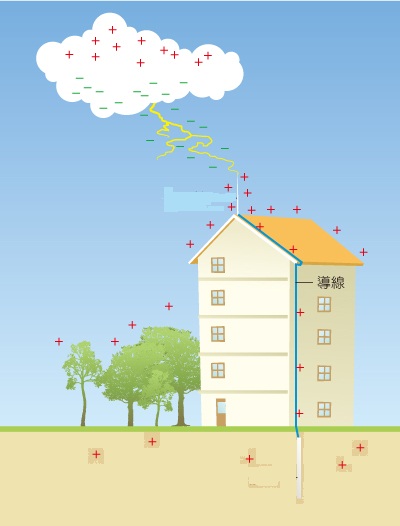What is Thunder and Lightning
Lightning
Lightning occurs because of a massive electric charge flowing from cloud to cloud, from one part of the cloud to another, or from a cloud to the ground.
Scientists are not very sure exactly how this happens, but thunderclouds carry electric charges, and these charges separate out within the cloud. The lower portion of a cloud generally carries negative charges and the upper portions carry positive charges. These charges keep building up. Normally, charges do not flow easily through air. Air is an insulator, but when a huge amount of charge builds up, the insulating property of air breaks down. Nearby air molecules are ripped apart. These torn molecules are charged and this air containing charged particles becomes a conductor of electric current. This process (of ripping apart the air molecules) happens in steps. Successive layers of air are made conductive in a zigzag or step-like path. The path of conductive air (due to charged particles) which extends from the thundercloud is made by what is called a step leader. The step leader forms the ‘conductive path’ in the air, from the cloud to the ground, or to a neighbouring cloud. The step leader is not as bright as the flash of lightning. Figure shows how accumulation of charges leads to lightning.

A very large amount of electric current is generated during a lightning strike. The air in the path of lightning heats up enormously. Its temperature reaches about 30,000°C momentarily, even hotter than the surface of the sun! This causes the flash of lightning that we see.
The enormous amount of heat produced makes the air expand very suddenly. This causes a wave of vibrations (called a shock wave), which is the cause of the thunder that we hear. Thus, we see that lightning is accompanied by large amounts of electric current and very high temperatures, both of which are very dangerous. We must, therefore, learn to protect ourselves during a thunderstorm.
Lightning Conductors
Lightning conductors are used to protect buildings from the damaging effects of lightning. Lightning strikes buildings or other objects because the materials in them provide an easier path to the ground than air. Lightning is more likely to strike projecting objects like trees, poles, wires, or buildings than larger, flatter surfaces projecting to the same height or lower. Lone buildings are also primary targets. The basic idea behind lightning protection is to provide a direct, easy path for the lightning bolt to enter the ground without passing through a building or any other object. A lightning conductor runs from the top to the bottom, along the outer wall of the structure (building, etc.) to be protected.

The lower end of the lightning conductor is connected to a metal plate, which is buried deep under the ground. If lightning strikes, the lightning conductor provides an easy path for the charge to pass through to the ground, thus protecting the building.
Safety Measures Against Lightning Strikes
Lightning usually strikes tall buildings and trees. Here are some safety measures you can take if you are caught in a thunderstorm.
- Do not take shelter under a tree. Not only are you in danger of being struck by lightning, but if the tree gets struck by lightning, it could catch fire and cause great harm to you.
- Try to take shelter indoors.
- You can even take shelter inside a car or a bigger vehicle like a truck.
- Do not run across a large open field, or high ground.
- If you cannot find a safe place, squat down in a low-lying place.
What is an Electric Spark?
An electric spark is an electric discharge (i.e., flow of electric charges) through air, vacuum, or any other gas. You would have seen these sparks at electric switches. Switch off all the lights at night and then observe the switch ; closely when you switch off the fan. You will most likely see a small flash of light. This is an electric spark. This > is due to the charges jumping across the small gap formed when the switch is being turned off. Lightning is one ; example of a huge electric spark in the atmosphere. The flash of light that we see is due to the air molecules ’ being heated up to very high temperatures.
